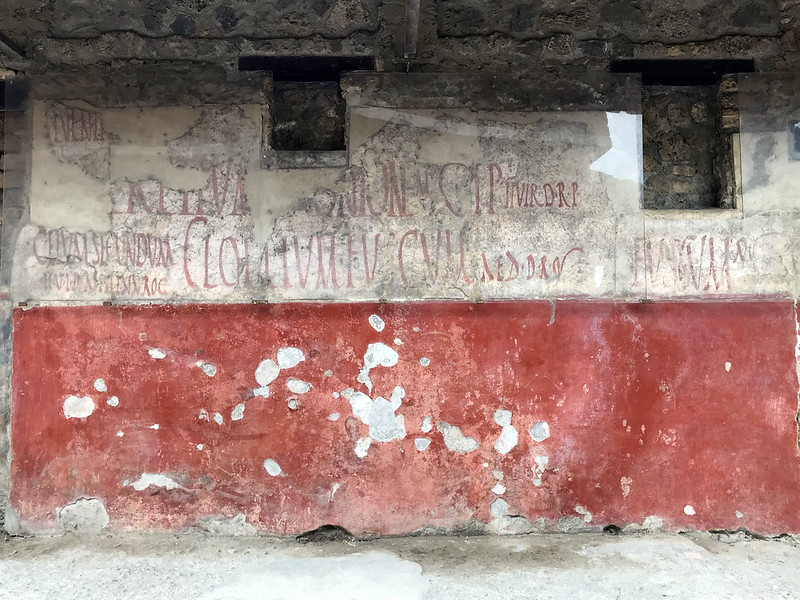In Stone and Story
Early Christianity in the Roman World
Materials available for professors by request only
Chapter 10: Prominence & Character
Photo Gallery
Photos 10.1 and 10.2
These are two examples of election endorsements (called dipinti) found on the external walls of buildings in Pompeii (see also figures 10.4 and 10.5 in In Stone and Story). The second of these photos shows an endorsement calling on people to vote for Gnaeus Helvius Sabinus. There were over 100 election endorsements for Sabinus, none of which had been painted over by later notices. This suggests that Sabinus had campaigned in the spring of 79, having taken office in July of that year (on the likely assumption that he won the vote). Unfortunately, his time in office was cut short by the eruption of Vesuvius in the fall of that same year.
Photos 10.3 and 10.4
Two statues stood on either side of the entrance of the corridor allowing the civic elite to enter the amphitheater. The statues were of “Gaius Cuspius Pansa, son of Gaius, father” (C[aius] Cuspius C[aius] f[ilius] Pansa pater) and his son “Gaius Cuspius Pansa, son of Gaius.” These photos show the inscriptions at the base of the statue bays, with the names prominently displayed below the statues and with their positions of honor listed as well. After the earthquake that shook Pompeii in 62, funding for the restoration of the amphitheater was substantially provided by these two men.
Photo 10.5
From this photo (of inscription CIL 10.854), we can see that a man named Titus Atullius Celer donated money to sponsor the rebuilding of the amphitheater after the earthquake of 62. In particular, he donated a section of the seating in the amphitheater. The beginning of the full inscription reads as follows:
T = Titus
Atullius = the family name, Atullius
C F = son of Gaius/Caius (F = filius, or “son”)
Celer = his public name
++ V = duovir (magistrate)
Photo 10.6
Statue bases can be found in several locations in Pompeii’s forum. On them stood statues of prominent civic leaders who were publicly memorialized by the town council for their benefaction to the people.
Photo 10.7
In “the gem cutter shop” of Herculaneum was found this herm (that is, a sculpture of a person’s head and perhaps upper body). It depicts a male who was most likely the householder. Setting up this herm in a central place within the shop was a gesture to his prominence within the household (and perhaps beyond).
Class Activities
Discussion Questions
- Chapter 10 of In Stone and Story discusses some of the rhetoric and customs surrounding political campaigns in the Roman world. How might they compare to political rhetoric and customs where you live — whether at the local, state, or national level?
- How were the characteristics of Jesus-followers supposed to differ from their wider culture, according to Paul (in relation to prominence and character)? How did Paul seek to illustrate those proposed differences?

